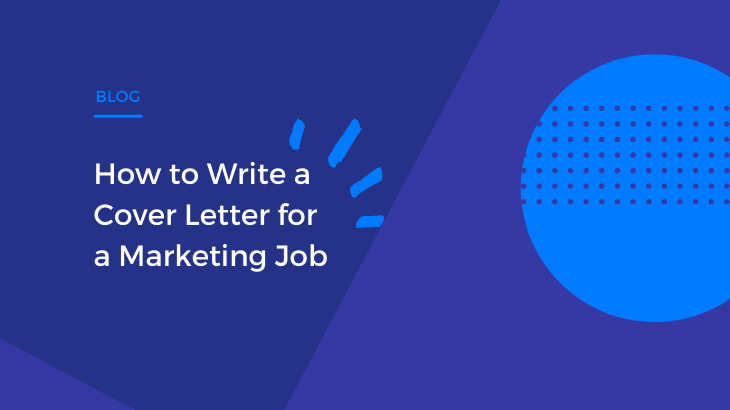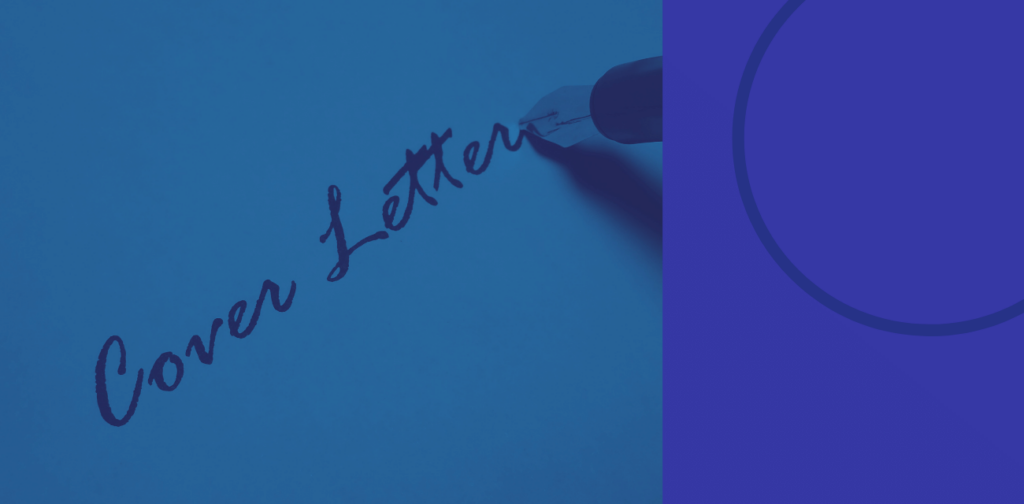
Cover letters are an important part of the job application process. They are your chance to introduce yourself to a potential employer or hiring manager and show them why you would be a great fit for the position. Including a well-crafted cover letter example can showcase your qualifications, experiences, and passion for the role. Many companies ask for cover letters, and not including one can hurt your chances of getting the job.
In this blog post, we will discuss why writing a good cover letter is important, what should be included in a cover letter, and some tips and tricks for writing an effective one. Plus, we’ll include some templates that you can use as a starting point!
Cover letters are important because they are your chance to make a good first impression on potential employers. They allow you to show off your writing skills and give them an idea of who you are as a person. A well-written cover letter can make all the difference between getting hired or not! A great marketing cover letter, in particular, should highlight specific marketing achievements and use hard numbers to showcase the quantifiable results of your skills and experience.
Before we get into the specifics of what should be included in a cover letter, let’s take a look at some general Dos and Don’ts:
Do use specific examples to illustrate your marketing skills and experience
Do tailor your letter to the company and marketing position you are applying for (the job description is a great starting point for this)
Do showcase your marketing expertise with specific examples, highlighting notable achievements in digital marketing, social media, and SEO
Don’t simply repeat your resume – go beyond listing your experience and skills
Don’t forget to proofread your letter for spelling and grammar mistakes
A cover letter should be around 250-300 words in length. Any more than that, and you run the risk of boring the reader. Any less, and you may not be able to fully explain your experience and skills.

Now that you know the basics, let’s take a closer look at what should be included in a cover letter.
Specific examples of marketing campaigns you have managed or executed, highlighting your ability to develop and implement comprehensive marketing strategies, analyse market trends, and exceed performance targets.
There is no one specific format for writing a cover letter, but there are some general guidelines you can follow:
Make sure you personalise the letter by adding the hiring managers name
Start by introducing yourself and stating the position you are applying for
State the marketing manager position you are applying for in the introduction
Outline your marketing skills and experience, using specific examples
Explain why you are interested in the position and what you can bring to the company
Thank the employer or hiring manager for their time and consideration
Hello Sam,
My name is [Name], and I am applying for the role of [Position] at your company.
I have been working in marketing for [number] years, with experience in both digital and traditional channels. In my current role as a Marketing Executive at XYZ Company, I manage our social media accounts, write blog posts every week, and help to organise events such as trade shows. As a digital marketing specialist, I have honed my skills in SEO, PPC campaigns, and content marketing, which have significantly increased our online presence.
During my time at XYZ Company [insert achievements relevant to the job here].
I believe I would be a good fit for your company because of my passion for [insert reason here].
Thank you for taking the time to consider my application.
Kind Regards,
Keep reading for further cover letter tips.
Make sure you include the Hiring Manager’s name in the cover letter. You can find this information on the company website or by doing a Google search.
Most people just use the first name of the hiring manager, but if you want to be extra formal, you can use their full name.
The key is to mirror the language that is used in the job ad. If the company seems less formal then follow suit, and vice versa if they seem more formal.
Most people introduce themselves in a cover letter with something like:
My name is [name], and I am applying for the role of [position].
Or, if they have been referred to the job by someone in the company, they use something along these lines:
I am writing in response to your advertisement for a Marketing Manager at XYZ Company. My friend John Smith suggested I contact you about this position as he believes it would be an excellent fit for me.
However, to create a killer opening line write something like this:
I am applying for the [position] at your company because I know I can increase your pipeline by x5 times with innovative marketing strategies.
The key is to make sure that your opening line stands out from all other cover letters being sent for that particular job. Think about what makes you unique and try using some different language or phrases than those used by others!
If you can get to the heart of what the client’s main pain point might be, e.g., driving the pipeline, setting up a predictable marketing engine, implementing account-based marketing, then you can use that to create your killer opening line. Job descriptions are a great resource to find out what those pain points might be.
It’s best to avoid generic references to your abilities, such as “I am a hard worker” or “I have great communication skills.” While these may be true, hiring managers want to see SPECIFIC examples of how you have used these skills in the past.
Consider using a story to demonstrate your skills that explains why you are interested in the job and what makes you qualified for it. For example, if your cover letter talks about how much experience with social media management then mentioning an accomplishment like increasing follower growth by 50% over six months may be helpful here (but don’t just say “I am good at using Facebook”).
You could also include specific details like: “I’ve managed campaigns on Twitter before which helped increase engagement by 40%.” It’s important not only to show off your knowledge but also to help them understand exactly what they’ll get out of hiring someone who has this particular skill set – so make sure there is a clear connection between what you have to offer and what they are looking for.

Recruiting managers love to see stats because they show you have had a measurable impact on the business you’ve worked for. As an example, if you’re a demand generation marketer, you could add in numbers like MQLs, SQLs, and revenue influenced by marketing. Including metrics from successful marketing campaigns can demonstrate your ability to drive customer acquisition, revenue growth, and brand visibility.
As a further example, if you’re a content marketer you could also write about how your content has helped with demand generation. And also include metrics about keyword ranking, search results, traffic, engagement, etc.
However, try to avoid using statements like ‘I increased leads..’ and use numbers instead.
In a similar vein, focus your cover letter on what you can do for the company, rather than what you will get out of it.
A common mistake is to add sentences like, “I’m looking for…’
The employer has a problem (an open job) and they’re looking for a solution to that problem. So it’s important in your cover letter to the hiring manager to focus on what you can do for the company.
Then, during the interview process, you can focus more on the opportunity itself and what the company can do for you. But it’s important to get them to buy into you first.
A good way to highlight your experience in your cover letter is to include testimonials. A cover letter is essentially a sales document, and if you can use the cover letter to outline how well you’ve done in previous jobs, this will help sell yourself as an applicant. For inspiration on how to include testimonials effectively, you can look at marketing cover letter examples.
The key is to not just copy and paste other people’s quotes into your cover letter – be sure that they’re directly relevant to the job at hand! It also helps if these are from people who have worked with you before or know what working alongside would look like.
Although it may seem obvious, it’s important to make sure your cover letter font size matches with the rest of the document. If there isn’t any typeface specified by someone else (e.g. the company’s branding guidelines), choose a font that is easy to read and has plenty of white space on the page.
Some other things you may want to keep in mind when choosing a cover letter font include:
Avoid using script fonts or decorative fonts, as these can be difficult to read
Use a standard typeface such as Times New Roman, Arial, or Calibri
Keep your font size at between 11 and 12 points for optimal legibility
Cover letters should be brief and to the point. If there is any information that needs explaining or elaborating in person at some later date, then save it for your cover letter. However, try not to leave readers hanging with an ambiguous ending such as: “I look forward to hearing from you.” A cover letter isn’t a verbal conversation where people can ask questions—it’s written communication and therefore must have a clear purpose!
Give them one final reason why hiring you would benefit their company so much more than anyone else who has applied for the job too.
Also, don’t forget to include your personal contact information so they can reach out if need be. You should include an email address, phone number, and even your address so they have an idea of where you live.
Don’t feel you have to put your full address on there; something like London is fine.
You can round out your cover letter by adding an image. This adds some visual interest to your cover letter and can make it more visually appealing – especially if the cover letter is being read on a screen (e.g. via email).
Make sure you use an image that’s relevant to the cover letter content, otherwise, it might come off as cheesy or forced!
An easy option would be to add the logo for the business you’re writing your cover letter for.
– Traditional Marketing Cover Letter Template
– Digital Marketing Cover Letter Template
– Social Media Marketing Cover Letter Template
NB – Mention the marketing tools you have used in your cover letter to demonstrate your expertise and experience in utilising digital marketing tools for market research, multi-channel marketing campaigns, and data-driven strategies.
After you’ve written your cover letter, proofread it for grammar and spelling mistakes. It’s also a good idea to ask someone else to read through the letter before you send it—sometimes we can’t see our own mistakes!
Additionally, make sure to highlight any marketing initiatives you have led or contributed to. Emphasise your ability to plan, execute, and optimise these initiatives to drive measurable results such as increased brand awareness, revenue growth, customer acquisition, and engagement. This will demonstrate your strategic and data-driven approach to marketing.
So when you’ve found a marketing job you want to apply to, it’s important to ask these questions before applying.
Why am I interested in this position?
What are my skills and experience in marketing and do they fit at least 80% of what the company is looking for?
How can I tailor my cover letter to show that I’m the perfect fit for the job?
What achievements can I write about that demonstrate my ability to succeed in the job?
If you can answer these questions, you’re ready to start applying for marketing jobs!
Facebook Groups for Finding Jobs in Marketing e.g. DGMG
Looking for a Remote Job in Marketing? Try This Website
Other Job Sites You Can Use to Find Jobs in Marketing – Reed, Total Jobs, CV Library
Writing a cover letter can seem like an overwhelming task. However, by following some simple guidelines, you will be able to write one that is tailored to the position and company you are applying for! Make sure your cover letter includes specific examples of how your skills have been used in past roles, the marketing strategies you have developed or executed, as well as why you are interested in the position and what you can bring to the company.
Need more help writing your CV? Check out our blog post, How to Create a CV: The Ultimate Guide
Subscribe to our fortnightly newsletter to hear about our latest podcasts, blogs, career advice & jobs.